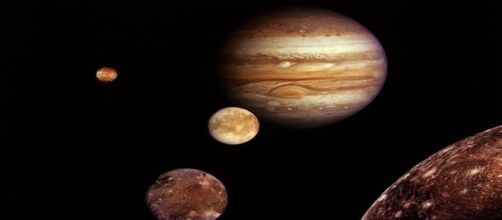NASA’s Flyby mission to Europa, planned to be launched in 2020, has been given the green light and will move on to the design phase later this month. The green light was given after the key decision point B review held on February 15th. After successfully completing Phase A, Phase B will start by the end of this month.
According to the reports available, NASA will start the design phase commonly known as Phase B on February 27th. Just like every project of NASA, every phase should pass each stage of review to make sure all the requirements are met to complete the process and launch successfully.
Europa thought to have more water than Earth
Europa is an ocean world, and many feel that it has more water than Earth. The aim of the robotic mission to Europa is to investigate whether the conditions on Europa are habitable or not. Scientists believe that the seafloor of Europa might be more active than that on Earth. They believe that Europa’s surface color of yellow-brown is proof of irradiated salt that is erupting from the ocean. They also believe that Europa may have the chemical energy to support life.
Phase A of mission to Europa has completed successfully
During Phase A of the Europa mission, NASA’s scientists selected ten instruments that would help them to study and observe Europa. The team also tested a few components for the spacecraft like instrument detectors and solar cells, and this process will continue during Phase B as well.
Phase B continues until September 2018, and the team will work on the preliminary design for the system and subsystems. During this phase, the team will also choose the prototypes of hardware elements for their scientific instruments. It is also believed that the team from NASA will also plan on building and testing of subassemblies for the spacecraft.
Final phases includes Phase C and Phase D
During the last phase of creating the mission to Europa spacecraft, the team will work on the final design, fabrication of the spacecraft, assembling, testing, and launching. The spacecraft is planned to be launched sometime in 2020 to Jupiter, and once it reaches orbit, it will orbit Jupiter every two weeks.
During the preliminary mission, NASA plans to complete 45 flybys of Europa. In each flyby, high-resolution photographs of Europa will be taken so that the team can study and investigate the structure and composition of Jupiter’s moon. NASA’s mission to Europa also includes a plan of landing on Europa by 2031.

